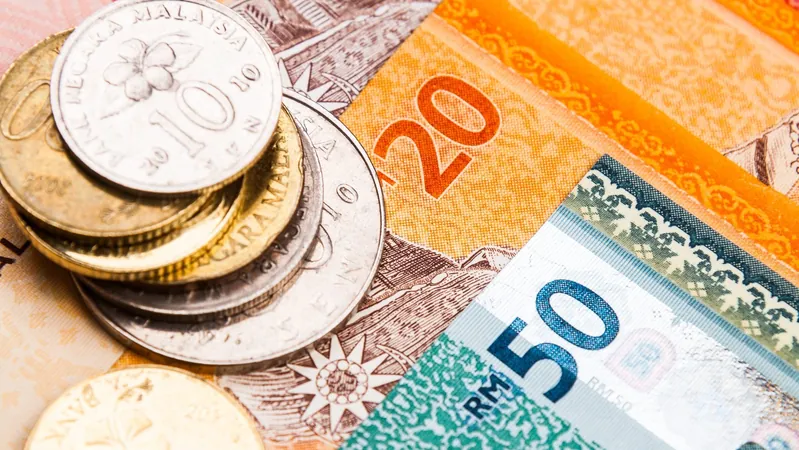
Malaysian Ringgit Soars as Foreign Investments Surge, Squeezing Singapore Dollar's Buying Power
2024-10-10
Author: Jia
SINGAPORE: The Malaysian ringgit is surging, significantly impacting the purchasing power of the Singapore dollar.
Earlier this year, Singaporeans enjoyed favorable rates when shopping, dining, or vacationing in Johor Bahru, but this advantage is quickly diminishing.
In February, the exchange rate stood at S$1 = MYR3.5725; however, it has recently dropped to S$1 = MYR3.28, resulting in noticeable price adjustments for Singaporeans.
The primary driver of this currency shift is the remarkable increase in foreign direct investment (FDI) in Malaysia.
Major multinational corporations, including Microsoft, Google, ByteDance, Intel, and Amazon Web Services, have channeled significant financial resources into Malaysia, reflecting a robust investment climate.
According to the Milken Institute's Global Opportunity Index 2024, Malaysia is recognized as one of the top investment destinations in Asia's emerging markets due to favorable investment conditions.
The international law firm Trowers has dubbed Malaysia as “your next FDI destination,” highlighting substantial capital influx from Singapore, the USA, China, Japan, and the Netherlands.
This positive trend comes as a stark contrast to earlier this year when the ringgit was struggling, hitting a 26-year low against the US dollar at US$1 to RM 4.8 amidst high inflation woes.
However, the Malaysian economy has shown signs of recovery; by early August, the ringgit had surged to an 18-month high of US$1 to RM4.42, claiming the title of Asia’s best-performing currency.
Recent reports from UOB’s Global Economics and Market Research indicate optimism for Malaysia’s investment landscape.
With a healthy FDI outlook expected in the short to medium term, projections suggest a consistent growth trend of 3.6% yearly might lead to an annual FDI inflow reaching RM51.6 billion (S$15.7 billion) by 2030, assuming no major economic disruptions.
This is a dramatic turnaround compared to last year when FDI dropped to a mere S$11.34 billion.
The first half of 2024 has shown promising signs of recovery, with Malaysia attracting US$3.1 billion (S$4.04 billion) in FDI, marking a 17.9% increase from US$2.6 billion (S$3.39 billion) in the first half of 2023.
For Singaporeans, this means adapting to tighter budgets when crossing the border for shopping or leisure activities.
As the ringgit continues to appreciate, it is crucial to keep a close eye on these economic developments that could further impact spending habits in the region.
Will the ringgit's ascent continue, or will the tides turn once more?
Only time will tell, but one thing is certain: the currency landscape in Southeast Asia is changing dramatically.


 Brasil (PT)
Brasil (PT)
 Canada (EN)
Canada (EN)
 Chile (ES)
Chile (ES)
 España (ES)
España (ES)
 France (FR)
France (FR)
 Hong Kong (EN)
Hong Kong (EN)
 Italia (IT)
Italia (IT)
 日本 (JA)
日本 (JA)
 Magyarország (HU)
Magyarország (HU)
 Norge (NO)
Norge (NO)
 Polska (PL)
Polska (PL)
 Schweiz (DE)
Schweiz (DE)
 Singapore (EN)
Singapore (EN)
 Sverige (SV)
Sverige (SV)
 Suomi (FI)
Suomi (FI)
 Türkiye (TR)
Türkiye (TR)